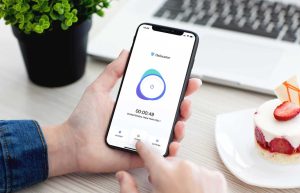
Apple is preparing the most significant transformation in the iPhone’s 17-year history.
The plan is all about redefining both the device’s hardware roadmap and the timing of its annual releases. The shift reflects an effort to stabilize revenue throughout the year, reduce pressure on its workforce and suppliers, and better position Apple in a crowded, fast-moving smartphone market.
The changes, first detailed by Bloomberg, represent a philosophical pivot away from Apple’s long-running fall launch spectacle — an event that has shaped global consumer expectations and Wall Street forecasts for more than a decade.
A three-year iPhone revamp
Apple is currently in the midst of introducing three all-new iPhone concepts over three consecutive years. The process began with the iPhone Air and redesigned iPhone 17 Pro models, a lineup intended to signal the start of a new era after what many analysts considered sluggish innovation cycles and controversial choices, including the move to titanium in the iPhone 15.
The next phases of the overhaul include Apple’s first foldable iPhone arriving in 2026, followed by an entirely new premium model in 2027 equipped with a curved glass display and an under-screen camera. If accurate, this would be the most radical hardware redesign since the iPhone X.
These moves highlight Apple’s renewed emphasis on its flagship product despite external criticism that the company has lagged behind rivals in AI and next-generation consumer technologies.
The Fall
Apple’s release calendar has long operated like clockwork. Following the shift from summer launches to fall 2011 releases — originally a delay caused by iOS 5, iCloud, and Siri — the annual September-October event became a global marketing juggernaut. For Wall Street, this meant revenue predictability. For Apple, it meant synchronized manufacturing, consistent product marketing, and a reliably huge holiday sales boost.
But over time the strategy became strained.
Crowded fall releases created internal bottlenecks, operational stress, and manufacturing spikes. The introduction of Apple Intelligence in 2024 — widely criticized for its uneven rollout — exposed how intense the annual schedule had become for Apple’s engineers and suppliers.
The revised strategy, beginning in 2026, aims to distribute product launches across the year. Apple expects to release:
• In fall 2026: iPhone 18 Pro, iPhone 18 Pro Max, and the foldable iPhone.
• Approximately six months later: iPhone 18, iPhone 18e, and possibly an updated iPhone Air.
This would effectively double the number of revenue peaks per year and reduce dependence on a single season.
The iPhone Air
The iPhone Air — Apple’s thinnest iPhone to date — represents more of a technology experiment than a mainstream product. Although some commentators had framed slow sales as a cause for delay, Bloomberg states that Apple never planned annual refreshes for the Air. The name itself was a signal that it would not be tied to the numbered lineup.
Internally, Apple had expected modest demand, forecasting that the Air would account for 6–8% of new iPhone sales — roughly the level reached by the discontinued iPhone 16 Plus.
The second-generation model is expected to shift to a 2-nanometer chip to address battery life concerns, but is not expected to receive major design changes. While the addition of a second rear camera is technically possible, Bloomberg notes this would complicate an already crowded camera plateau, raising questions about whether such an upgrade is necessary.
More importantly, Apple uses the Air as a testbed for foldable technology — materials, miniaturized components, advanced battery structures, and new internal layouts. Instead of training consumers for thin designs, the Air helps prepare the supply chain for a fundamentally different iPhone architecture.
Mac Pro loses priority
In another major internal shift, Apple has effectively sidelined the high-end Mac Pro. After a decade of uneven updates — including the widely criticized 2013 “trash-can” design and the 2019 redesign meant to restore trust — the Mac Pro has again fallen behind.
There is no M4 Ultra chip in development, and Apple has canceled the Mac Pro model that would have used it. Development resources instead favor the Mac Studio, which now appears to be Apple’s long-term solution for professional desktops.
This move signals the end of an era in which the Mac Pro represented the pinnacle of Apple’s computing ambitions. For creative professionals, it raises questions about modularity, upgrade paths, and the future of high-end Mac workflows.
Tesla reverses course
After years of resistance, Tesla will introduce Apple CarPlay integration — a dramatic reversal for CEO Elon Musk, who once refused to support the platform to protect Tesla’s in-house infotainment system.
Tesla’s change of heart reflects shifting market dynamics:
• Tesla’s share of the global EV market is under pressure.
• Consumers increasingly expect seamless integration with the Apple ecosystem.
• The company needs to preserve sales momentum ahead of Musk’s attempt to secure the full value of his $1 trillion compensation package.
Tesla already supports Apple Music, Podcasts, and an Apple Watch app, but CarPlay will be the most significant integration yet — a long-requested feature that may help attract buyers who previously viewed Tesla’s ecosystem as too restrictive.
Leadership change
Jeff Williams, Apple’s longtime Chief Operating Officer and a key lieutenant to CEO Tim Cook, has formally retired. Williams served as COO since 2015 and played a crucial role in Apple Watch development, Apple’s health initiatives, and operational strategy.
His departure triggered a sweeping organizational reshuffle:
• Health and Fitness+ now fall under Eddy Cue.
• watchOS development moves under Craig Federighi.
• Hardware engineering for Apple Watch transitions to John Ternus.
• Design teams led by Molly Anderson and Alan Dye now report directly to Tim Cook.
Williams’ exit is Apple’s most significant leadership change since Jony Ive’s departure in 2019 and may signal broader organizational shifts ahead.
Apple Fitness+ under review
Apple Fitness+ is undergoing internal review due to lackluster financial performance and an overly crowded services portfolio. Apple may consider a customizable version of the Apple One bundle, or discontinuing Fitness+ as a standalone product and merging it into a future Health+ service.
These decisions could shape Apple’s evolving services strategy — a crucial component of the company’s long-term revenue plan as hardware cycles elongate.
Apple’s iPhone Pocket
The newly released iPhone Pocket accessory — priced between $150 and $230 — has drawn significant attention. While Apple has a history of high-priced fashion partnerships, this accessory’s concept and presentation have made it particularly polarizing.
Bloomberg notes the product evokes the whimsical iPod Socks of the early 2000s but without the mass-market charm, suggesting that the accessory may serve more as a branding experiment than a functional item.
No iPod revival
Despite nostalgia among younger consumers, a revival of the iPod next year appears unlikely. Apple rarely resurrects discontinued product categories, and music consumption habits have shifted decisively toward streaming on multipurpose devices. Revisiting the MP3 player era would run counter to the ecosystem Apple has spent decades building.
In other news about Apple, Cook is again at the center of speculation about when he might step away from the company he has led for more than 14 years.
Source of Article



